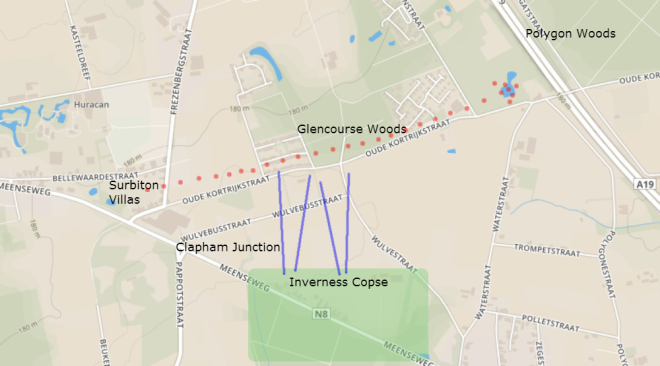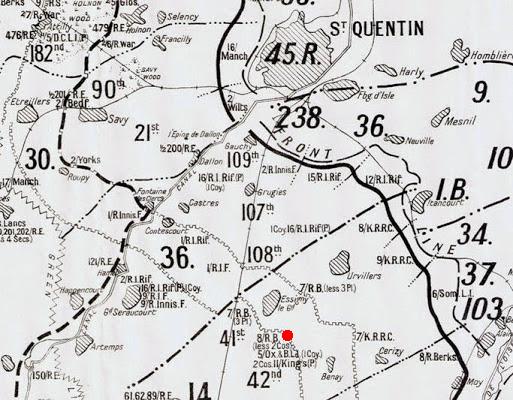John Joseph Blencowe [4579]
1898-1984
Father’s Name: John [229] c 30.5.1864 Caversfield died 1911 [7004]Bicester; Oldest Ancestor William Blincow, C1702, Bicester.
Mother’s Name: Matilda Eliza Austin, b. 1868, Blackthorn, Oxfordshire d. Abt Aug 1935, Ploughley, Oxfordshire
Marriage Dt: 1925 Ethel E Harris Bicester.
K comments: Brothers Cyril Albert served with the 4th Bn. Ox. & Bucks LI and Fred James with RDC and 96th Territorial Reserve Batt, Dorsets.
Spouse comments: Ethel Eleanor Harris. born 13 February 1904 Bicester died December 1989 Oxford.
Children: Derrick J 1925-2017 and Gerald 1930.
(Research):GR[B] Bicester March 1898.
1901 Census Sheep St Bicester
- John Blencowe 36 Carter on Farm
- Matilda E Blencowe 33
- Frederick J Blencowe 7
- Cyril A Blencowe 5
- John J Blencowe 3
- Thomas W Blencowe 1
1911 Census Bicester 7 Bardwell Terrace Bicester
- Blencowe Cyril M 1896 15 Bicester Oxfordshire
- Blencowe Dora F 1903 8 Bicester Oxfordshire
- Blencowe Fredr M 1894 17 Bicester Oxfordshire
- Blencowe John M 1898 13 Bicester Oxfordshire Apprentice Outfitter
- Blencowe John M 1865 46 Bicester Oxfordshire
- Blencowe Thomas M 1901 10 Bicester Oxfordshire
 |
|
| Rifle Brigade |
WW1
Blencowe John Joseph, 1898, Bicester, Private, S 13914, 13th, 8th & 11th Bn. Rifle Brigade.
1915
Enlisted in 1915 with the 13th Service Battalion. This battalion was formed at Winchester in October 1914 as part of Kitchener’s 3rd tranche of recruitment and attached as Army Troops to 21st Division. The 13th Bn. moved in November 1914 to billets in High Wycombe then moved to Andover in April 1915 and transferred to 111th Brigade in 37th Division. On 31st July 1915, they landed at Boulogne and went into Reserve until 1916 at the Somme.
- 12th Dec. John landed in France and joined the 13th Bn. as a reinforcement.
John had two more battalions listed in the Rifle Brigade medal roll. We can only speculate as to the timing of the movement between them. It is likely that before or after the Somme he transferred to the 8th Bn. of the 41st Brigade, 14th(Light) Division. What follows is the war history of the 8th Bn. until it was disbanded (reduced in cadre 27 April 1918).
1916
- 14th July – 3rd Sept. The Battle of Delville Wood* Possibly in Reserve for this battle.
- 15th – 22nd Sept. The Battle of Flers-Courcelette* While no significant role was played by the 8th Bn. (that I can find) this was a significant victory for British, Canadian and New Zealand forces.
The battles marked * are phases of the Battles of the Somme 1916
1917
- 16-18th Aug. The Battle of Langemarck*** 14th Division was not involved on these dates
- 19th Aug.

The key locations of the August 1917 battle overlaid on a modern street map The 14th Division (II Corps) attacked with a brigade through Inverness Copse, although held up further north by fire from Fitzclarence and L-shaped farms. A German counter-attack forced the British half-way back through the copse but with support from two tanks on the Menin Road, the British held on despite three more German attacks.
- 22-29th Aug. Battle of Arras, Engaged at Inverness Copse.
- 22nd Aug. The 14th division was ordered to attack Inverness Copse with the 43rd Bde, on the right, and the 42nd Bde, with the 41st Bde in reserve. When the action began the 8th Rifle Brigade was still in camp at Dickiebusch. By 11 am the line into Inverness copse was held, at this time the 8th Bn. was ordered to Zillebeke Bund to replace the 8th KRRC who were ordered forward. 1
- 23rd Aug. A German attack was conducted by the 34th Division, against the 14th Division in the II Corps area, from Inverness Copse to Glencourse Wood, with bombers, light machine-guns and flame-thrower units, which pushed the British back to the line of 22nd August, between Inverness Copse and Glencourse Wood.2
- 24-26th Aug. In the course of the battle over the next few days, the 8th Bn. was split and under orders from the 42nd and 43rd Brigades. Fighting took place for the 8th Bn. in Glencourse Wood.1
- 27th Aug. An attack at 04:45 hrs by two tanks and four platoons of the 41st Brigade of the 14th Division, now under the command of the 23rd Division, on a trench from the Menin Road for 600 yards (550 m) through the western edge of Inverness Copse failed in the rain and mud, after the tanks ditched at Clapham Junction. The 41st Brigade was relieved during the night and an attack by the German 32nd Division was made on the north end of the 23rd Division front line, which was also a costly failure. 8th Rifle Brigade 2nd Lieutenant W.N Sprotson with a platoon of “C” Company was selected to make the attack. Most of his platoon became casualties on the way up to the forming up place and, although reinforced by No. 14 Platoon, the state of the ground and the absence of tanks destroyed any chance of success. The 8th Bn. was relieved on the 28th. While labelled “a minor operation” the casualties for the 8th Bn. was 3 Officers and 112 OR’s.1
The battles marked ** are phases of the Arras Offensive
1918
- 21st – 23rd Mar. The German Spring Offensive.

The position of the 8th Bn. RB in 1918 when the Germans began their Offensive - 21st -22nd Mar. The German attack at St Quentin.+ By midday of the 21st, the Germans had captured Essigny The 8th Rifle Brigade were just south of Essigny holding the line there when the German continued its advance. After being overwhelmed there the remains of Bn. and the 14th Division withdrew to the Crozat Canal at Jussy where their further withdrawal was covered by the 6th Bn. Northants. The Montange Bridge was blown up partially that day.
- 23rd Mar. Early on the morning of Saturday 23rd, German troops broke through the line in the 14th Division sector on the canal at Jussy.
- 24th Mar. The battle continued throughout the morning along the entire front and at 11:00Hrs the remnants of the 14th Division were ordered to withdraw further south to the town of Guiscard.
- 4th Apr. The Battle of the Avre+. The 14th Division continued its withdrawal to a line nearer to Amiens, The final German attack was eventually launched towards Amiens. It came on 4th April, when fifteen divisions attacked seven Allied divisions. The 14th part a mixed bag of British/Australian troops held the line between Thennes and Hangard on the Luce river just north of Moreuil. In the British sector, 18th and 14th Divisions, with 9th Australian Brigade, repelled three serious German 228th Division assaults, but around 10:00 hrs an enemy break-in on 14th Division’s front forced anxious withdrawals to positions barely a mile east of Villers-Bretonneux. At this point eventually on the 5th the Australian Bn. stopped the German advance.
The battles marked+ are phases of the First Battles of the Somme 1918
- In the above two actions, the Division suffered very severe casualties, losing almost 6,000 troops. XLVI and XLVII Brigades RFA lost all their guns. The Division was withdrawn from the line and placed on the construction of a new defensive line in the rear. On
- 26th Apr. The infantry battalions were reduced to a training cadre. Various units were temporarily attached before the Division was moved to England for re-establishment on 17th June 1918. The refreshed Division, although still short on numbers, moved back to France and joined Second Army 2-6th July 1918.
- It’s at this time it is most likely that John was transferred in the field to the 11th Battalion Rifle Brigade (59th Bde 20th Division) see the next bullet point.
- 20th Apr. The 11th Bn. were withdrawn to the area south-west of Amiens and received many new drafts of men during the summer. While the 11th Bn. continued fighting through to the end of the war there was no significant battles and the CWCG records show only regular but small losses for the battalion.
- 17 – 26th Oct. The Battle of the Selle.
- 1st Nov. The Battle of Valenciennes.
- 4th Nov. The Battle of the Sambre.
- 5-7th Nov. The passage of the Grand Honelle.
- 11th Nov. At the Armistice, the Division was in the area between Bavay and Maubeuge and later that month the units moved to the Toutencourt-Marieux area.
1919
- Jan-May. Demobilisation of the Division began in January and was complete by the end of May. It is assumed that John experienced the war history as outlined, but caveats are of course he could have been transferred early that Apr. 1918 and he may have missed action because of sickness or war wounds.
Sources
- Andy Pay at the Long Long Trail war forum.
- Wikipedia.
Medals
 Awarded 1914-1915 Star, British and Victory medals.
Awarded 1914-1915 Star, British and Victory medals.
After the War
Married 1925
Spouse Surname: Ethel E Harris, Date of Registration: Jan-Feb-Mar 1925, Registration District: Bicester, Volume Number: 5a, Page Number: 1484.
Sons Derrick 1925 and Gerald 1930 Bicester.
1939 Census
2 Caul Cottage Corner View, Lower Heyford, Ploughley, Oxfordshire
| John (J) | Blencowe | 16 Jan 1898 | Male | Civilian Staff Roof Station Formerly Clothing Salesman | Married | 189 | 1 |
| Ethel E | Blencowe | 13 Feb 1904 | Female | Unpaid Domestic Duties | Married | 189 | 2 |
| John | Harris | 16 Jun 1861 | Male | Sawyer Estate Timber Yard Retired | Widowed | 189 | 5 |
| James | Powell | 15 May 1888 | Male | Electrician Instrument Tester | Married | 189 |
Two people underage not shown likely Derek and Gerald
Death 1986 Age 86 years
Ploughley, Oxfordshire, Volume: 20, Page: 2684.
GALLERY
Note: there are 2 records that exist for this man that is not shown in the Gallery for copyright reasons.







